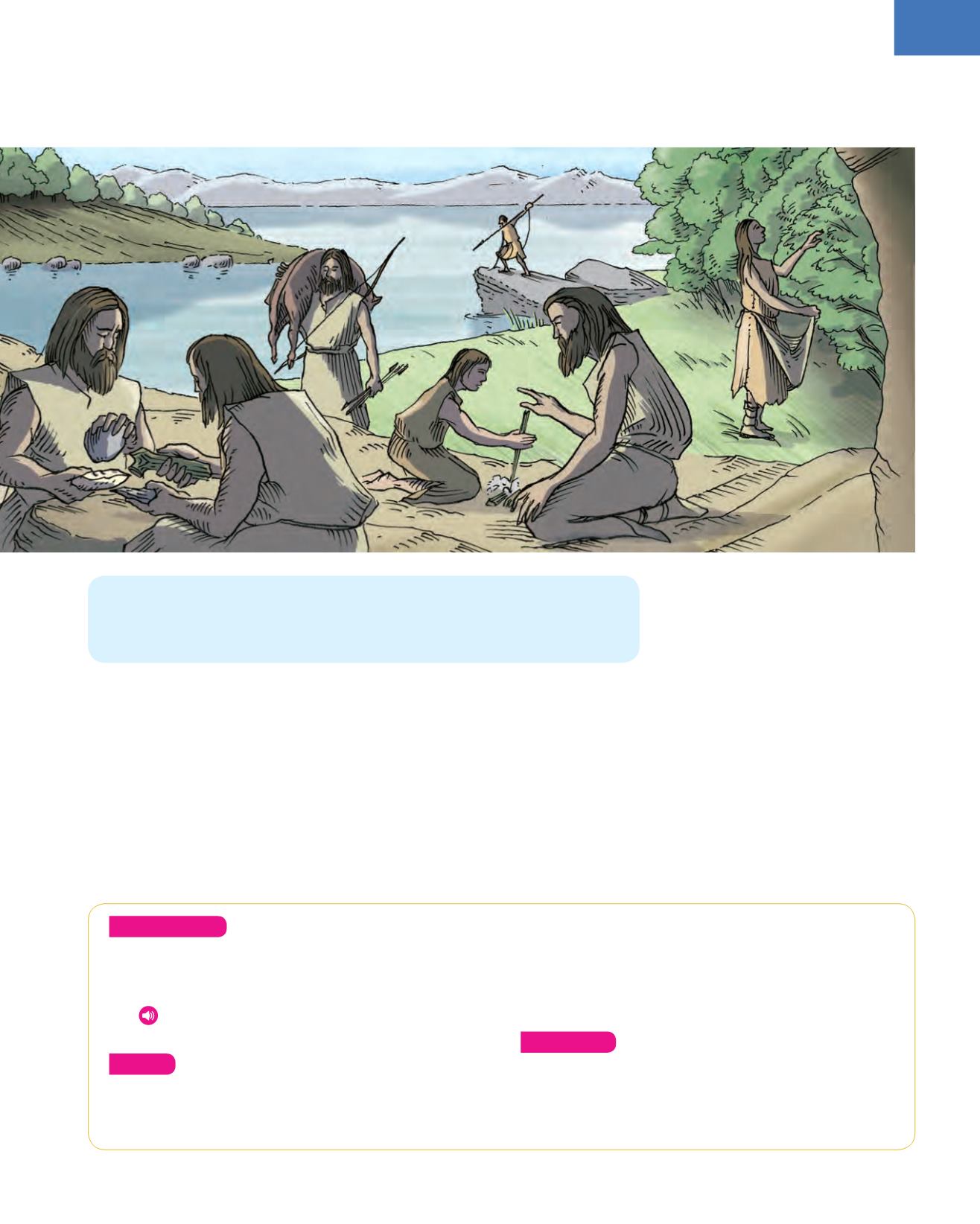
1
1. Prehistory: the Paleolithic Period
17
To catch large mammals, hunting was done in groups. Stampedes
7
were caused so
the herds would go towards natural traps (swamps and ravines) or man-made ones.
Successful hunting required coordination, which probably led to the development of
language.
The inhabitants of the Paleolithic Period lived a
nomadic
life, moving around in search
of animals to hunt. They lived outside in
huts
made of branches and animal hides or
sheltered in
caves
. They wore the hides of the animals they had caught. They made
use of the whole animal, including the teeth and horns, which they used to make
tools or adornments.
In the Paleolithic Period, hominids organised themselves into small groups called
clans
(around ten people). Their members shared family ties. Various clans with
common ancestors formed a
tribe
. There were no important
social differences
among their members.
Understand
18.
Fire improved the life of human beings in the
Paleolithic Period. Make a list of the benefits it
brought.
19.
Look at the illustration. Listen and identify the
activities described and the tools used.
Apply
20.
The groups that did not learn how to make fire
were smaller in number than those who did. Why
do you think this was?
21.
Why was the rate of mortality so high during the
Paleolithic Age?
22.
What did the clans or tribes do when there was
no fruit left to collect or there were no animals to
hunt?
Evaluate
23.
How could the coordination needed to hunt in
groups have led to the development of language?
7
stampede
:
a group of frightened
animals suddenly running away


